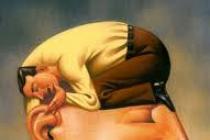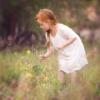They create them in the most favorable places, for example, in the hollows of trees. Preparation for the cold weather in these insects is always the same - by winter they try to grow as many young offspring as possible, seal the gaps with propolis and be sure to drive out more unnecessary drones (males) from the nest. Thanks to this, they prepare a strong family for the season, provide themselves with enough heat and food. This is true for both wild and apiary bees.
The outer part of the bee ball is dense, because it consists of almost motionless bees, tightly pressed against each other. And the inner one is looser, since the bees can move freely there to feed on honey and generate heat. The temperature inside the bee ball does not fall below 15°C, and by the end of wintering it can reach 30°C. Insects constantly change places in a ball, so as not to get cold and let hungry brothers in to honey.

Bees are not afraid of severe and dry frosts, the main thing is that there is enough food. And a hive wrapped in snow is especially pleasant for them, because snow perfectly retains heat. But strong dampness in the hive and drafts for bees can be fatal, as well as, however, too dry air. All this can spoil the honey, and the bees will have nothing to eat. This is why experienced beekeepers set up their hives away from drafts and at the same time provide good ventilation inside. And if the hives are transferred to the wintering place in the room, they must control the temperature regime and suitable air humidity there.

Preparing bees for wintering, if multi-hull bee keeping is practiced in the apiary, has its own characteristics. The main thing is that the small, relative to the Dadanovsky, size of the Rutovskaya frame also determines a small supply of food in it. When wintering, it is obligatory to transfer the club to other, initially unoccupied frames.
We take into account that in cold weather the club is inactive, moving to the side is difficult. Climbing up is easier: the insects move towards the food heated by the current of air, there is no need to bypass the plane of the frame. Therefore, even small families winter better in two rather than one building. Keeping bees in multi-hull hives is convenient for the industrial production of honey. Working with cases, not frames, increases productivity.
nest formation
We proceed to it immediately after the main bribe. We leave light brown frames, since in spring the uterus lays eggs in them more readily. We remove honey from cruciferous, honeydew, old candied or other, not suitable for wintering. We discard old or damaged honeycombs, without regret sending them to the furnace. We leave two cases: the lower one is for the nest, the upper one is for fodder reserves. We feed.
Before wintering, we once again check and correct, if necessary, the arrangement of the frames. You should get the following system in the placement of stocks. Club - from below, near the notch, on the frames released after the release of the brood, partly inside the cells (for compactness). All frames are full copper, mostly sealed. Set two with bee bread along the edges of the upper body, they will be needed only at the end of wintering. With a difference in the filling of honeycombs with honey, mix the most filled with the rest. Half-empty frames should not exist at all.
Often weak colonies combine two, or a family plus layering, a nucleus with a spare queen. The multi-hull keeping of bees makes it possible, if the size of the mini-hive of the nucleus is small, to place it inside the third housing, with an entrance to the entrance. In any case, the partition between families should be solid, without gaps. For example, we nail a false bottom made of thin plywood. Passing through the small holes of the pheromones of a foreign queen leads to the fact that the bees feel like one family. And if so, one uterus is destroyed ...
Feeding with sugar to replenish food supplies and build bees
It is done for two reasons. The second, rare - if the food reserves are insufficient for wintering (the year is already very unsuccessful) or a large percentage of honeydew or crystallized honey. All the same, they will not overwinter well on such honey. The main reason is greed. Or, which sounds more decent, out of thrift. Honey can be sold, and sugar - it is five times, no less, cheaper. And at the same time suitable for wintering. But since processed syrup is still not exactly honey, and processing is hard work for insects, we try to minimize the negative effect of our stinginess.

Processing should be done by old bees that will not hibernate! This will allow them to be used more fully. The young must go into the winter unworked. A bribe in nature, if there is in the fall, is weak. And the old people still won’t live until spring, so we try to use them as much as possible in the processing of syrup for the winter. To do this, we feed the syrup in large doses, several liters each, as soon as we have chosen one cottage, we give the next one. We mark the quantity, for example, after each selected feeder we put a dash with a pencil on the liner. The work is small, but we know how much is fed.
In the manufacture of syrup, simply pour sugar into boiling water and mix, it dissolves perfectly. Ratio within 1/1 or 1/1.5 (water/sugar). Do not try to make it thicker, it does not make the task of insects easier. The fact is that the main thing is not the evaporation of excess moisture, which at the end should be no more than 20%, but the inversion of sugar: the decomposition of sucrose to glucose and fructose, which are easier to digest. To do this, bees collect nectar up to 50 times, in our case - syrup in the goiter, where processing takes place under the influence of enzymes. It will be easier for them to process liquid feed.
The introduction of various additives during the preparation process, for example, extracts from the brood of drones, protein substances, acids, honey, various herbal tinctures, does not interfere. Perhaps this will have a positive effect (study data vary).
Incentive feeding has other goals and is given in a different way. From the date of the last flight of bees in your area, we count the month. The bee develops for 21 days, after the appearance it flies out of the nest on the 4th day, plus a few more days in reserve. We get the time when the uterus should finish laying eggs. The bees bred later will not have time to fly around and lighten the intestines before the cold weather, which will greatly complicate their wintering!
Prior to this, the queen must lay eggs in order to grow more young bees. But if there is no bribe, she will not do it. That's why we give incentives. Workers drag the sugar syrup placed behind a non-continuous partition into the nest, and for the family it is like a small bribe. So if nothing blooms anymore, or autumn bad weather prevents the bees from flying, we give small (glass) doses of syrup daily.
In the last feeding, it is good to give a medicine for nosematosis for preventive purposes. Dosage - in accordance with the instructions.
Treatment for varroatosis and other diseases
Important! Wintering of insects sucked by a tick at the pupal stage can be fatal for them.
There are physical methods of treatment, the most common is treatment in a heat chamber. Biological - various odorous herbs, cuttings of drone brood, etc. The use of chemicals in various ways is common:
- spraying with medicinal solutions;
- placing medicines in small dispensers in the hive;
- burning special substances and fumigating with smoke;
- the introduction of drugs into the composition of the fed medical syrup.

Acids are used - oxalic, formic, lactic. Preparations based on pyrethroids, bromopropylates, and formanes, poisonous to ticks, are burned in commercially manufactured smoke guns and home-made devices, or even simply in smokers. There are forms of drugs that are already adapted for smoldering in the hive: a thermal tablet or strip after ignition is placed in the nest. The specific choice - what and how to treat - is up to the beekeeper. Choose the method that suits you.
There is another tick, moreover, more widespread than many people think. We are talking about the Acarapis woody mite, other names for the invasion are the Isle of Wight disease, tracheal mite, creeper. Alas, this mite is invisible, and for a number of reasons, beekeepers do not know enough about it. Therefore, often all manifestations of acarapidosis are attributed to varrootosis, and only they are treated for it ...
There are other diseases of bees, but now we will not dwell on each in detail. The only thing worth saying is that any disease must be cured before wintering! Winter is already a difficult time for bees, and treatment options at this time are limited.
Keeping bees in multi-hull hives is very promising. The design allows you to serve large apiaries with low labor costs. At the same time, it is easy to create optimal conditions for bees at each stage of development, which is rewarded by a high yield of marketable honey. Preparation for wintering in this case requires taking into account the characteristics of the structure. This should not be taken as an additional difficulty: it is no more difficult to prepare bees for winter when kept in multi-hull hives than in hives of other systems. It is only necessary to take into account their features.
Left behind the main honey collection - the crown of the entire beekeeping season. It develops differently. As they say, year after year does not fall, but with skill and diligence, the beekeeper usually does not remain at a loss. August for bees is already autumn, when they, without missing a single day, are preparing for a long winter. The number of flowering plants is decreasing. Yes, and they are stingy for nectar. True, where sunflower is cultivated, honey collection continues until autumn. But all the same, the behavior of bees is changing here. They begin to save food, save every drop of it.
The first thing they do in preparation for winter is to drive the drones out of their nest. After all, swarming is over, and during a strong honey flow, it was not up to them.
Bees carry open honey from the lower and outer combs and accumulate it at the top of the hive.
Letki are now heavily guarded. Even at night, the bees do not remove the guard. To help the bees in protecting their homes, the entrances are left small, no more than 5 cm, and the upper ones are completely closed. The bees themselves narrow the notch, if it is large, seal the cracks in the hive with propolis.
During the honey harvest, the bees worked for days: they collected nectar during the day, and made honey from it at night. This difficult work undermined their strength. Many died, and the survivors are so worn out that they are no longer able to endure the winter. The whole burden of wintering and the future of the family falls on the bees that appeared in August and September. The most vital young and strong, until the next season they retain the ability to nurse a new generation, build honeycombs, collect honey and pollen.
And although the uterus, obeying the laws of nature, no longer produces such a large number of eggs as in spring and summer, the bees still take care of her: they feed plentifully, provide a place for laying, freeing the middle of the nest from honey - the warmest place. The younger the queen, the longer, until the very cold weather, she lays eggs.
Many believe that late-born bees do not have time to fly around due to weather conditions and cause concern to the family in winter, as if they do not survive until spring and make up the bulk of the dead bees. However, a lot of facts have been collected that deny this, which means that it is necessary to use all the means that contribute to the autumn egg-laying and prolong it.
The rate and duration of oviposition are greatly influenced by the food reserves in the nest. In spring, the queens continue to lay eggs with a minimum amount of food (5-7 kg) and even in cold and free weather, and in autumn they stop laying with significant supplies (12-15 kg). This is why colonies with little honey stop raising brood relatively early.
Large food reserves are needed to increase the bee colony not only at the end of the season, but also at the beginning of the next one. They are a guarantee of higher honey collection next year. Therefore, in a multi-hull hive, 2-3 cases are left, in Dadan hives - full nests, in sunbeds - 12 frames, in package families - one case each.
It is very important that the bees can find at least a small amount of nectar. This keeps them active. Such supportive, stimulating late-summer and autumn bribes contribute to the growth of the mass of young bees. Late migrations, undertaken only for this purpose, fully justify themselves.
When, due to drought or cold, rainy weather, the season has turned out badly and the bees have not even stored food for the winter, they have to feed sugar syrup. True, it is better to give honey, and experienced beekeepers always keep it in stock. But bees can also live on sugar syrup. However, this inferior food should be used only in extreme cases. They do this: a kilogram of sugar is dissolved in a liter of water brought to a boil and, having cooled to a temperature of 35-40 ° C, at night they give families in feeders about 3-4 kg each.
The bees quickly detect the sweet liquid and carry it to the nest. They remove excess from the syrup
water, enrich it with enzymes, that is, they work on it in the same way as on nectar. After a day or two or even the next day, the syrup is given again - and so on until the food reserves are brought to the minimum norm (16-18 kg).
Processing the syrup, the bees expend a lot of energy and wear out significantly. Therefore, it is better to give supplementary food early, in the first half of August, so that summer bees take part in its processing, which still will not survive until winter. Bees can make their work easier and at the same time improve the quality of food by adding a little, at least a third, of honey to the syrup. It is very important that the bees at this time satisfy their need for food at the expense of natural resources and do not spend what they have accumulated for the winter. You can replenish stocks at the end of August if the weather is warm.
It is also necessary to give sugar syrup when the prepared food contains an excess mineral salts causing intestinal disorders in bees. This is typical for the so-called honeydew honey, which is formed from the sweet secretions of aphids and other sucking insects collected by bees. Hot and dry summer favors their reproduction. There is so much fall on the leaves and branches that it, like rain, drops from the trees to the ground. Honeydew honey is dark, with a greenish tint, thick and viscous. Even its presence in flower honey is harmful to bees, especially in winter, when they are unable to fly out to empty their intestines. Therefore, for the winter, honeydew honey is removed from the nests. For humans, honeydew honey is considered very useful.
In August, the main concern of the beekeeper is to create favorable conditions for growing a large number of bees by winter. At this time, they unite two by two or attach to others all weak families that have worked out in the honey collection and have not had time to get stronger, ungrown layers, late swarms.
Finish preparing nests for the winter. In multi-hull hives, two hulls are left. The lower free compartments, from which the bees carried the honey up, are removed. The upper hulls should be full of honey. If they do not contain bee bread, which the bees will need to grow winter brood, when the bulk of the club moves there, the two middle honey frames are replaced with honey-pergo, previously harvested or taken from the former lower case. Now the club will be able to satisfy its need for protein feed and vitamins until the spring pollen harvest.
When preparing bees for winter, they are guided by the rule: it is better to err on the side of increasing food reserves than not adding them or leaving them short. Excess honey is not a waste, but a guarantee of a safe wintering and normal spring development of the family. This is a kind of insurance fund, located next to the bees, and not in the warehouse.
Bees will not waste a single gram of honey in vain. The food supply of a family in a multi-hull hive is 35-40 kg.
In winter, bees move in the hive only vertically - from the bottom up, where the food reserves are located. The two-tiered nest is close to the natural one in that the bees in it can easily move from one street to another. Contributes to this free space between the buildings. In its positive effect on the course of wintering, it is equivalent to labyrinths, nooks and passages, which are usually found in the nest of wild bees, allowing them to move freely in the club.
In 12-frame hives and beds, nests are collected from frames containing 2.5 kg of honey. They are replaced by lighter honeycombs. In addition, full copper stores should be installed. With such food reserves, the bees do not starve and safely endure the winter.
With each autumn day, the uterus reduces the laying of eggs. The last generations of brood ripen. In the nests, work is gradually coming to an end.
The bees crowd around the brood, group into a denser mass, maintaining the temperature necessary for the larvae in the brood zone, and carefully feed them. In shape, this mass of bees resembles a ball or a large ball, somewhat elongated from top to bottom. After all, like all social insects, honey bees do not hibernate in winter, but live a normal life - they eat, move, and react to environmental influences. Since their body temperature is unstable and depends on the air temperature, they just huddle together to keep warm. The club is usually located at the bottom of the hive on empty combs, where the bees can snuggle closer to each other, not far from the entrance from which fresh air comes.
But if a warm sunny day falls in autumn, the club breaks up and the bees fly out of the hive. Osei-
the flight is short, friendly, with a special, as if sad, farewell ringing. Bees seem to be in a hurry to take advantage of short-term heat. At this time, they do not fly far. As soon as the sun goes behind the cloud, they immediately return home. The bees need to leave the hive for a short time, at least for a few minutes, in order to cleanse their intestines. Obeying the instinct of self-preservation, they usually do not miss the opportunity to fly around in late autumn and, freed from toxins, will be much easier to winter. Moreover, the later they make a flyby, the better.
Helping the bees in their preparation for winter, the hives are best located in a place protected from the winds.
ste - among trees or shrubs, next to a fence or buildings, in a lowland, etc. It will become quieter and warmer in the apiary. In addition, you need to turn the hives with notches to the south. Then in sunny weather, especially at noon, the bee dwelling will warm up, the heat and the light passing through the notch will encourage the bees to quickly leave for the autumn flight. If the rainy season drags on, then the bees, having already fallen into deep rest and being in a dense club, do not always immediately respond to short-term heat. In such cases, it is necessary to take, as they say, special measures: open the entrances wider and even deliberately disturb the bees, remove the roofs so that the nests warm up from above.
P the period of winter dormancy of bees (non-flying period) in the conditions of the middle zone of our country lasts more than six months in other years, and ensuring the safety of bee colonies for a long time is a difficult and responsible task, but well-overwintered colonies are characterized by increased resistance to diseases, provide ample opportunities for intensive growing the live weight of bees, the formation of early full-fledged layering, actively working on the pollination of plants and honey collection.
During the active season, the task is to prepare the apiary for wintering to provide conditions that correspond to the biological characteristics of the bees. This is achieved by the timely implementation of a whole range of measures.
One of these conditions is the timely increase in the mass of (long-lived "winter") worker bees ((their life expectancy is about 300 days). This is achieved by timely and expedient replacement of old queen bees with healthy young ones, active use of July and August supporting honey collection from late-flowering plants and special honey plants sown in such a way that they bloom in the second half of July-August, or by stimulating and prophylactic feeding of bees with sugar syrup.
Only strong families have the best resistance to various diseases, most safely endure the permissible deviations in the microclimate of winter dwellings, develop well in the spring and actively work in the honey collection.
THAT IS ALL SALVATION IN STRONG FAMILIES IS NOW BECOME ONE OF THE MAIN CONDITIONS OF RATIONAL BEEKEEPING.
Among the factors that have a significant impact on the results of the wintering of bee colonies, the NUTRITION LEVEL of the bees, which depends on the availability and quality of food, is in many cases decisive. And if the colonies have 18-25 kg of high-quality natural food (honey ), then they will not need any additional carbohydrate feed throughout the winter.
It is possible to ensure the preparation of such a quantity of high-quality fodder honey only during the main honey collection, when the bees are actively working on collecting nectar from the main honey plants and when there is no danger of getting into the honeydew honeydew. nesting sotoramok, in one-two-hull hives and beehives-loungers.
In order to PREVENT DEATH OF BEES FROM VARROATOSIS (in winter), immediately after the end of the main honey collection and the selection of marketable honey (even before the start of therapeutic, prophylactic and incentive feeding of bees), it is advisable to treat the bees with some kind of acaricide. Repeated treatment with acaricides is recommended after the exit of the main mass of autumn bees from the brood, but before the formation of the winter club in the families.
Bees overwinter most safely in dry, well-ventilated rooms (winter houses), in which the optimum temperature and humidity conditions are maintained.
Also important is the breeding of winter-hardy breeds of bees, well adapted to local climatic conditions.
AFTER THE END OF THE MAIN HONEY COLLECTION, a small amount of nectar and pollen enters the hives for some time. This time, without fear of creating prerequisites for the development of bee theft, it is necessary to use and inspect the nests of bee colonies. , the general condition of the nest and the suitability for wintering combs.
Food stocks are estimated by weighing the combs (or visually by the area of the comb occupied by honey). A honeycomb frame 435x300mm in size, occupied with honey on both sides, contains about 4kg, and a comboframe 435x230mm in size contains about 3kg of honey.
The presence of the queen in the nest is determined by the cells occupied by eggs and larvae. Solid, without gaps brood indicates a good quality of the queen.
A swarming queen cell with a normally gnawed apex (below) and a few randomly gnawed queen cells indicates that the bees changed queens by "silent shifting" although the colony did not swarm.
Fistulous queen cells indicate a change in the uterus, which occurred due to the death of the old uterus (the death of the old uterus can occur during the transportation of families, during the selection of honeycombs, etc.)
In the absence of a queen in the family, a large number of drones appear in the center of the nest (they do not exist in prosperous families by this time).
When neither queens nor drones are found in the nest, a control comb is placed.
In normal bee colonies, by September there should be at least one frame of brood of all ages.
Simultaneously with determining the suitability of colonies for wintering, extra honeycomb frames are removed from the nests, and frames with brood from the brood of bees are removed from the nest. Honeycombs with brown brood are left in the center of the nest (if there is a supporting honey collection in nature or feeding with sugar syrup, they will be filled in the top of its food).
ASSEMBLY OF BEE NESTS FOR THE WINTER.
It is necessary to pay attention to the fact that there are exactly as many combs left in it as they can be completely occupied by bees. In strong families, with sufficient food supplies, the nest is collected in a TWO-SIDED WAY. along the edges of the nest-frame with an increasing mass of food from the middle of the hive to its edges. In this case, no matter which way the bee club goes, there will always be enough food for it.
If the nesting honeycomb frames contain less than 20 kg of carbohydrate feed (17-15 kg), then for the winter food reserves are usually placed - ONE-SIDE (corner). frames containing 1.5-2.0 kg each, then frame according to the increasing mass of honey in them.
With small fodder reserves (12-8 kg), honey is placed within the nest with a "BEARD". In the center of the nest, opposite the notch, a copper frame is installed most completely. Other frames are placed to the sides of it; the more the frame is removed from the center, the less honey must be contained. No matter which side the bees are, they will move to the center of the nest, and there will be enough food for them until spring.
When assembling the nests, they make sure that honeycomb frames with protein food (perga) do not get into the middle of the nest. There is not enough honey in such frames, the bees will quickly eat it, the death of bees from starvation or the separation of the family into two clubs will follow, which will complicate its wintering. Gathering the nest should be borne in mind that the last brood comes out of the cells of the honeycombs located opposite the notch, and the club of bees will form on these frames. Eating honey, the club of bees gradually rises. Under normal wintering conditions, 2 kg of honey per one street is usually enough for bees to feed and grow honey on these frames, bees may not have enough of it, and they will try to move to neighboring frames.
If they fail to do this, they will die of starvation, although honey remains in the nest. 0-to +4*С) air temperature and relative humidity 75-85%.
Also, long before the wintering bees are placed in them, they undergo the necessary repairs and dry well, and before setting up the bee colonies, the wintering quarters are disinfected and deratized.
After assembling nests for the winter, it remains to carry out separate work to improve the condition of bee colonies: in some hives, the frame freed from brood should be removed; in others, check whether the queen has started laying eggs after insemination, whether the brood signet is normal; - due to their weakness or queenlessness, it is necessary to connect.
Some beekeepers consider old bees to be ballast and destroy them in order to save food. This should not be done. Old bees, forming a crust of the club, cover the young from the cold, contributing to this less energy consumption and "wearing out" of young bees. By uniting families and carrying out other work in the hives, it must be borne in mind that the bees have already placed their food reserves in their own way, so you should not unnecessarily move the frames and move the gate valves and prevent them in any way and actions from surviving the winter.

PLACEMENT OF BEES IN WINTER HOUSES - it is recommended when a stable cold snap sets in, which keeps it consistently within minus 6-7 * C in the mornings, best of all in dry weather, so as not to bring damp hives into the room.
The hives are installed in the winter house on special racks in 2-3 rows so that there is a possibility of free passage between them. Hives with strong families are placed on the lower racks, weaker families and cores are placed on the upper ones, where the temperature is somewhat higher. face the aisles.
WINTERING OF BEES IN THE WILL
The winter nest is collected in the middle of the hive and insulated from the sides and top with pillows stuffed with moss, or mats made from dry wormwood, marsh kuga, straw, or pillows stuffed with tow. The hives are placed on stands that are filled with slag, dry slag or river sand, sawdust, with an admixture of broken glass or straw (hay) with the addition of deratizants.
The lower entrances of the hives are closed, leaving the upper entrances open, which must be closed with bars or plugged with spruce branches. After that, the surface of the hives is covered with insulating material: dry leaves, shavings, straw (hay), etc., treated with deratizants, after which they are wrapped ruberoid, thick paper or roofing felt and tied with a rope (wire).

It is also possible to organize the wintering of bees in special casings made of croakers, boards, wattle and other improvised materials and designed for group placement of 4-6 hives in them. For insulation and protection against rodents, the free space between the hives and the casing is filled with spruce branches or other warming materials with the addition of deratizants.
No less safely wintering of bees is carried out in specially arranged huts, the surface of the frame of which is covered with a layer of straw up to 50 cm thick along the crate. The crate is made of coniferous spruce branches, brushwood, and other inexpensive materials.
If wintering of bees is organized in the wild without covering the hives with insulating materials, then the surface of the hives can be covered with a layer of loose snow 0.5-0.7 m thick.
Properly prepared for wintering, bee colonies do not require special care if the temperature and relative humidity of the air are maintained in the hives. And the occurrence of an increased rumble of bees indicates an unsatisfactory wintering. due to its strong crystallization.
In such a situation, it is necessary to carry out top dressing, although this will greatly disturb the bees. Successful top dressing will be obtained if the wintering of the bees is in the winter hut, where the air temperature is maintained within 2-4 * C. At the same outside temperature, you can feed the bees, hibernating in the wild or adapted for this purpose. In extreme cases, with a strong cold snap, it is better to bring the bee colonies into a warm room with a temperature of 4-6 * C and feed the worried colonies and then return them to their place.
FEEDING THE BEES
V in such cases, it is better to use thick sugar syrup (concentration - 2 kg of sugar per 1 liter of soft water), pouring it at a temperature of 30-35 * C into disinfected brown honeycombs. bees.
Also, the distribution of sugar syrup is used in glass jars, which, after filling with syrup, are tied with a four-layer bandage of gauze and placed upside down on 2 pencil-thick sticks that fit on the upper bars of the honeycomb frames directly above the club of bees.
CARE OF BEES IN WINTER TIME.
Bees hibernate better with closed lower entrances and open upper ones. At the same time, there is no draft harmful to bees in the hive, heat is better retained, and air is removed from the nest before it cools and releases moisture in the form of dew on the honeycombs and walls of the hive. As a result, hives do not form dampness and mold.
If the hive is not equipped with an upper notch, then the corner of the canvas is slightly tucked over the front shoulders of the frame and covered with an insulating pillow. Do not tuck the canvas on the opposite side of the notch - there will be a draft undesirable for bees in the nest, especially with increased ventilation of the winter hut.
The best temperature for wintering bees is considered to be from 0 to 4*C. At this temperature, the bulk of the bees will have a reduced metabolism, which will ensure their better safety. they may have premature brood.
To raise the brood and maintain the required temperature, more honey is consumed, the bees' intestines overflow, which negatively affects their wintering. When eating 1 kg of honey, approximately 1 kg of oxygen is consumed. temperature and humidity. Increased ventilation and cooling of the room are required even if the temperature in the winter hut does not exceed the norm, since with subsequent warming it will be more difficult to reduce the elevated temperature.
If, despite the measures taken, it was not possible to reduce the temperature in the winter hut below 5 * C, then the air humidity should be slightly increased. At normal air humidity (75-85%), the bees satisfy the need for water for feeding and feeding the brood due to the hygroscopicity of honey. And the relative humidity of the air in the winter house is determined using a psychrometer.
In the absence of a psychrometer in the apiary, you can use two aligned, equally indicating thermometers. The ball of one of them is wrapped with batiste or a double layer of gauze, the end of which is dipped into a vessel with water. Moisture evaporates from the moistened ball, cooling the ball the more the dryer the air in the room. According to the difference between dry and wet thermometer readings, using the table attached to the psychrometers, determine the relative humidity of the air in the room.
DETERMINATION OF AIR HUMIDITY,%.
| DRY | DISPLAY | ATEL | CMO | European Championship | HH | WOW | TER | MO | M | E | T | R | A |
| THERMOMETER | 0 | +0.5 | +1 | +1.5 | +2 | +2.5 | +3 | +3.5 | +4 | +4.5 | +5 | +5.5 | +6 |
| 0 | 100 | ||||||||||||
| +0.5 | 90 | 100 | |||||||||||
| +1 | 81 | 90 | 100 | ||||||||||
| +1.5 | 72 | 82 | 91 | 100 | |||||||||
| +2 | 64 | 73 | 82 | 91 | 100 | ||||||||
| +2.5 | 56 | 65 | 74 | 82 | 91 | 100 | |||||||
| +3 | 50 | 57 | 68 | 74 | 89 | 91 | 100 | ||||||
| +3.5 | 45 | 51 | 58 | 67 | 75 | 83 | 92 | 100 | |||||
| +4 | 36 | 44 | 52 | 59 | 67 | 75 | 84 | 92 | 100 | ||||
| +4.5 | 30 | 37 | 45 | 53 | 60 | 68 | 76 | 84 | 92 | 100 | |||
| +5 | 25 | 32 | 39 | 46 | 54 | 61 | 70 | 76 | 84 | 92 | 100 | ||
| +5.5 | 20 | 27 | 34 | 40 | 48 | 55 | 62 | 70 | 77 | 85 | 91 | 100 | |
| +6 | 15 | 21 | 28 | 35 | 42 | 49 | 56 | 63 | 70 | 78 | 85 | 93 | 100 |
For example, if a dry thermometer shows 1 * C, and a wetted one 0 * C, then in the leftmost column we find the number 1 * C, and in the upper one - the number 0 * C. At the intersection of these columns, the number 81 shows the percentage of relative humidity. Therefore, if the air is too humid, which happens when the nest is not sufficiently ventilated, then the honey liquefies and turns sour. Sour honey is no less harmful for bees than honeydew.
DETERMINATION OF HONEY QUALITY.
To determine the quality of honey, a small number of samples are taken from various nest frames and mixed. Then a little honey is placed in a test tube and dissolved in an equal amount of distilled water (1: 1). Then 10 parts of 96 * alcohol are added and shaken. Turbidity of the liquid indicates the presence of PADI, and the milky white color indicates its high content.
It should be noted that this method cannot be used to analyze buckwheat and heather honey, the solutions of which become cloudy even in the absence of honeydew. If there is no alcohol, the analysis can be carried out using lime water, which is sold in pharmacies. with the same volume of distilled water. All are well shaken, defended and poured without sediment into the dishes.
For analysis, we take 1 volume of honey, dissolve it in the same amount of distilled water, then add 2 volumes of lime water. All this is mixed and heated to a boil.
Also, bad results of wintering of bees, and sometimes their death occurs during the crystallization of honey. Bees cannot eat crystallized honey in the cells, having used up liquid honey, and die of hunger. Honey collected from cruciferous plants (colza, mustard, rapeseed) is especially prone to crystallization , camelina, wild radish, woad, hiccups, shepherd's purse). Honey collected from cotton, dandelion, thistle, sainfoin and heather is unsuitable for wintering, and in years with dry summers - sunflower.
It happens that ordinary honey also crystallizes in combs. This happens when the smallest germinal crystals get into the combs when drying old combs, using dark combs, feeding bees with high concentration sugar syrup, as well as with sharp changes in day and night temperatures, in weak families and uninsulated hives.
Dampness in the hive also leads to the formation of mold. With increased air humidity, the release of water from the body is disturbed in bees, and this contributes to overflow of the intestines with liquid feces and defecation of bees in the hive. -2-3 * C). You can also increase the temperature while increasing ventilation. If this does not give the desired results, then quicklime, table salt and other substances that absorb moisture are brought into the room. If this does not help, then it is better to transfer the bees to another room or set free.
There has long been a debate about the benefits of overwintering bees in the wild. One thing is clear, that if the wintering place for bees is bad, then it is better to leave them in the wild. In the central regions of the country, only strong and medium families can winter in the wild. They can be left in their places for the winter or gather in groups. For less cooling of the hives by the wind and earlier flight of the bees, the best direction of the entrances is south. The bees tolerate even severe frost, but the wind exhausts them, which leads to poor results.
In bees wintering in the wild, the cooled air entering the hive is unable to select a sufficient amount of moisture released by the bees. In case of insufficient ventilation, this moisture settles on the cooled surface of the hive walls and frames in the form of small drops or frost. There will be no dampness in the hives if warm, saturated in pairs, the air will immediately move away from the hive. To do this, the lower notch is partially opened and the upper one is completely open. when it completely covers them. As soon as a significant amount of snow has fallen, it must be collected and covered with hives. It is better to do this in warm weather. the temperature they need.
In Moscow and neighboring regions, bees winter in the wild worse than in winter quarters. This is explained by the fact that snow here falls late, often melts, as a result of which the bees are exposed to frequently changing, sometimes very low temperatures, dampness and wind. As a result many families are dying from the cold and overexertion to maintain the required temperature. In the central regions of the country, bees rarely suffer from dry air in the winter hut, but in Siberia and the Far East, the air is dry and honey thickens. To quench their thirst, bees eat more of it, overfill their intestines, worry, fly out of the hive and die.
To increase the humidity of the air, the floor is poured with water or wet bags are hung, containers with water are brought in. In case of sudden changes in the outside temperature, they reduce, expand or completely close the supply and ventilation pipes. A temperature fluctuation in one direction or another by 2-5 * C is undesirable, although won't have much negative impact.
However, the second half of the wintering of bees is more responsible, especially in the pre-exhibition period, when much more bees can die in a few days due to violation of the thermal and air conditions of the winter hut than in the whole winter.
Bees are disturbed by light, shaking, penetration into the hive of mice, low, as well as high temperature, poor food, dry air, lack of nest ventilation and a number of other reasons.
The light bulbs in the winter hut or the glass of the lantern should be painted red, which almost does not disturb the bees. In the worst case, you can use low-power bulbs with a lampshade that scatters light.
It is necessary to enter the wintering house carefully, without touching the hives. At the entrance, you should listen for 1-2 minutes to the general rumble of bees. A barely audible, even noise indicates a successful wintering of bees. when lowered, weak.
In worried strong families, the upper insulation is shifted or completely removed, the entrances are expanded or the ventilation of the room is increased; in the second case, the intake of cold or the removal of warm air is reduced. Sometimes the sounds of individual bees stand out in the general noise - this is a sign of the absence of a queen in the family.
They listen to bee colonies suspected of being in a dysfunctional state through a rubber hose. One end of the hose is inserted into the notch, and the other is leaned against the ear. days of setting the bees in the winter hut and until the second half of February, the bees are calm, make a barely audible sound.
One of the most time-consuming and responsible stages in beekeeping is the preparation of bees for winter. Low temperatures hinder the development of the bee family and do not have the best effect on the development of bees. An autumn increase in carbon dioxide concentration contributes to their physiological aging, and a decrease in temperature increases the energy costs of insects to regulate the microclimate inside the nest.
Therefore, ideally, wintering should take place without the loss of members of the bee colony. And the bees should not lose their health and energy. For detailed information on the sequence of actions to prepare your pets for the cold season, you can watch the video. Conditions that contribute to the preservation of the activity of the overwintered bee colony and the good collection of honey include:
1) building up the strength of the bee colony;
2) harvesting benign food by bees;
3) assembling the nest and creating the necessary conditions for keeping the family in winter.
In winter, bee colonies must go prepared.
Growing bees in autumn
It is quite difficult for bees exhausted during the main flow to build up young individuals in the amount necessary for a successful wintering. Therefore, the end of the honey collection should be marked by the autumn build-up of bees. First of all, in the fall, every beekeeper must make a thorough audit of bee colonies.
If any of the strong colonies have neither testicles in the combs nor brood, it is worth checking it for the presence of a queen. At the end of the honey collection period, worker bees become much smaller, so in the fall the number of nests should be reduced. To do this, first of all, combs containing a small amount of honey are removed, and low-copper combs with brood are placed on the edge of the nest so that the queen bee cannot occupy them with new brood. For the unhindered transfer of honey from the removed frames to the nest by your pets, they are placed one by one behind the diaphragm of the hive.
The nest contains two or three frames partially occupied by honey with good cells. It is desirable that the honeycombs be light brown in color. Such combs affect the reproductive instinct of queens, which will begin to lay eggs much more actively.
Skilled beekeepers use various methods to increase the strength of the bee colony during the absence of honey flow in nature. For example, they carry out stimulating feedings from sugar syrup (2 kg of sugar per 1 liter of water). And some take out apiaries to the territory with a late honey plant.
In order for colonies to winter safely, it is necessary to replace unproductive and old queen bees in a timely manner. Only young queens lay a large number of eggs and are able to create strong bee colonies by winter. In the apiary of each beekeeper, there must be cores with spare queen bees, which can quickly replace the missing queen from the family.
Procurement of quality feed
The most optimal time for harvesting food by bees is July, that is, the first half of the main flow. As a rule, for the winter-spring period, bees need about 25-30 kg of honey product. Beekeepers leave two honeycomb frames with honey on each side of the nest, or put them in storage. The frames are returned to the hive when the bees are preparing for wintering in October.
For the winter, 20 kilograms are usually left in the nest. The rest is removed in a room with a stable temperature and humidity. Uniform indicators prevent unwanted crystallization of honey reserves.
Bees hibernate much more successfully on light varieties of honey containing less minerals (meadow, sweet clover, fruit, linden). If the beekeeper failed to procure a quality product in sufficient volumes, then it is better to replace 50-60% of the reserves with sugar. Blanks should not contain honeydew impurities. In winter, honeydew causes diarrhea in bees and leads to the death of entire colonies.
Therefore, at the end of the honey plant, fodder reserves must be checked for the presence of honeydew. Of course, it is more reliable to contact the field laboratories of the Institute of Beekeeping. But if this is not possible, you can make an independent analysis.
First you need to prepare lime water. To do this, quicklime is diluted with distilled or rain water and the composition is shaken until the color of milk is obtained. The clear liquid formed from the settled mixture is poured into a clean container, and honey taken from different parts of the nesting combs is mixed in a glass.
Next, mix one part of distilled (rain) water, one part of honey and 2 parts of lime water, and then shake and bring the resulting solution to a boil. Strong turbidity and precipitated flakes are a signal that it is better to replace such honey with a more benign product or sugar. But we must remember that this analysis may show inaccurate results.
The bees easily pick up the syrup from the feeders and seal it as long as the weather is warm. Therefore, the beginning of September is the ideal time for feeding. Feeding of the bee family is carried out from feeders according to the following scheme: 3-4 liters of syrup 2-3 times in 2-3 days. It is important to prevent bee theft.
Assembling a bee nest and installing hives for the winter
After removing the bulk of the nest brood, assembly instructions for which can be viewed on the video, it's time to prepare insects for wintering. If your pets winter in a cold room or outdoors, it is preferable to leave the nest more compressed. Only honeycombs should remain in it, at least half filled with printed honey. In addition, in the combs, you need to leave two frames filled with honey and sealed bee bread.

Sealed honeycombs are the main source of food for bees in winter
Nucleuses, where spare queen bees are located, should be left with 10 kg of honey in 3-4 frames. The frames that have not yet been released from the brood are temporarily set to the edge of the nest. Nests are insulated from the sides and from above. Before wintering, the bees themselves are treated for braulosis, varroatosis and other diseases. At the end of the assembly of the nest, the family must be treated with an acaricidal preparation.
In regions that do not have severe winters, bees overwinter quite successfully outdoors. In this case, the main condition is the presence of very well-insulated hives with covered boards with notches. Bees feel good in sunny apiaries surrounded by forest, buildings or a fence. The best solution is to put the hives with the front wall to the south.
Wintering in specially constructed winter quarters has a number of undeniable advantages. These include good protection from wind, dampness and temperature changes, saving honey reserves and the convenience of monitoring the state of wintering bees. How to build a winter hut, you can learn from the video.
Preparing a winter hut for bees includes:
- construction of a winter hut with a temperature of + 4 to + 6 ° and air humidity in the range of 80-85%;
- providing ventilation in the summer-autumn period;
- the destruction of mold, the closure of mouse holes;
- insulation of walls and ceilings.
Cleaning of bees in the winter hut should be carried out when cold weather sets in, when it is no longer possible to count on warm weather for flying bees. The hives are brought into the winter road in dry weather. The movement must be carried out very carefully, otherwise the worried bees may leave the club and crawl away, which is fraught with their death. The hives are placed on racks in two or three tiers.
The strongest colonies should be located at the bottom, and the weak colonies and nuclei with spare queens should be on upper tiers. Notches facing the aisle should be opened only after the bees have calmed down. In the first days of wintering, the fans are left open, and then they are regulated in accordance with maintaining the required temperature. In more detail, the process of preparing for a safe wintering is clearly shown in the video.














